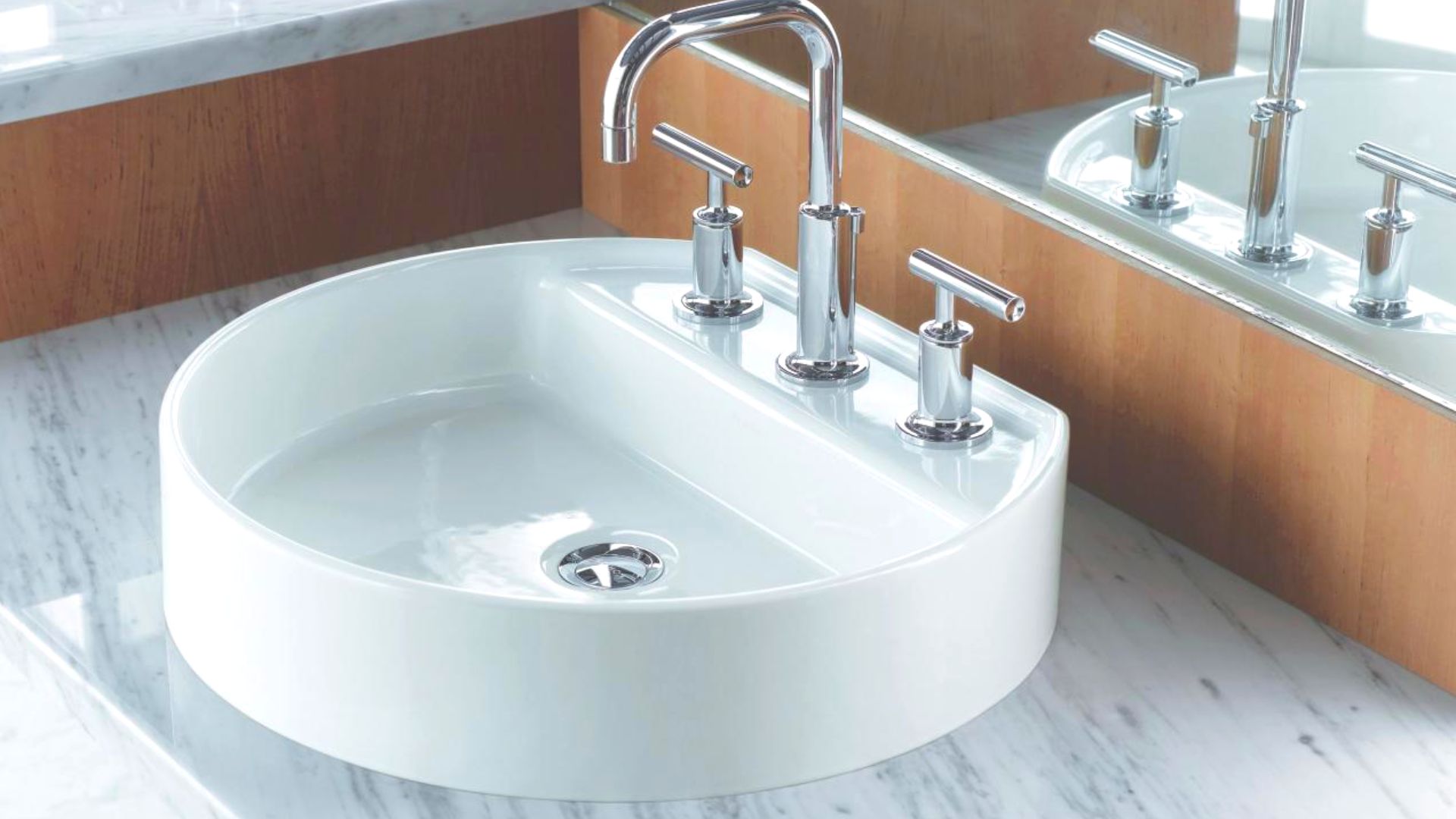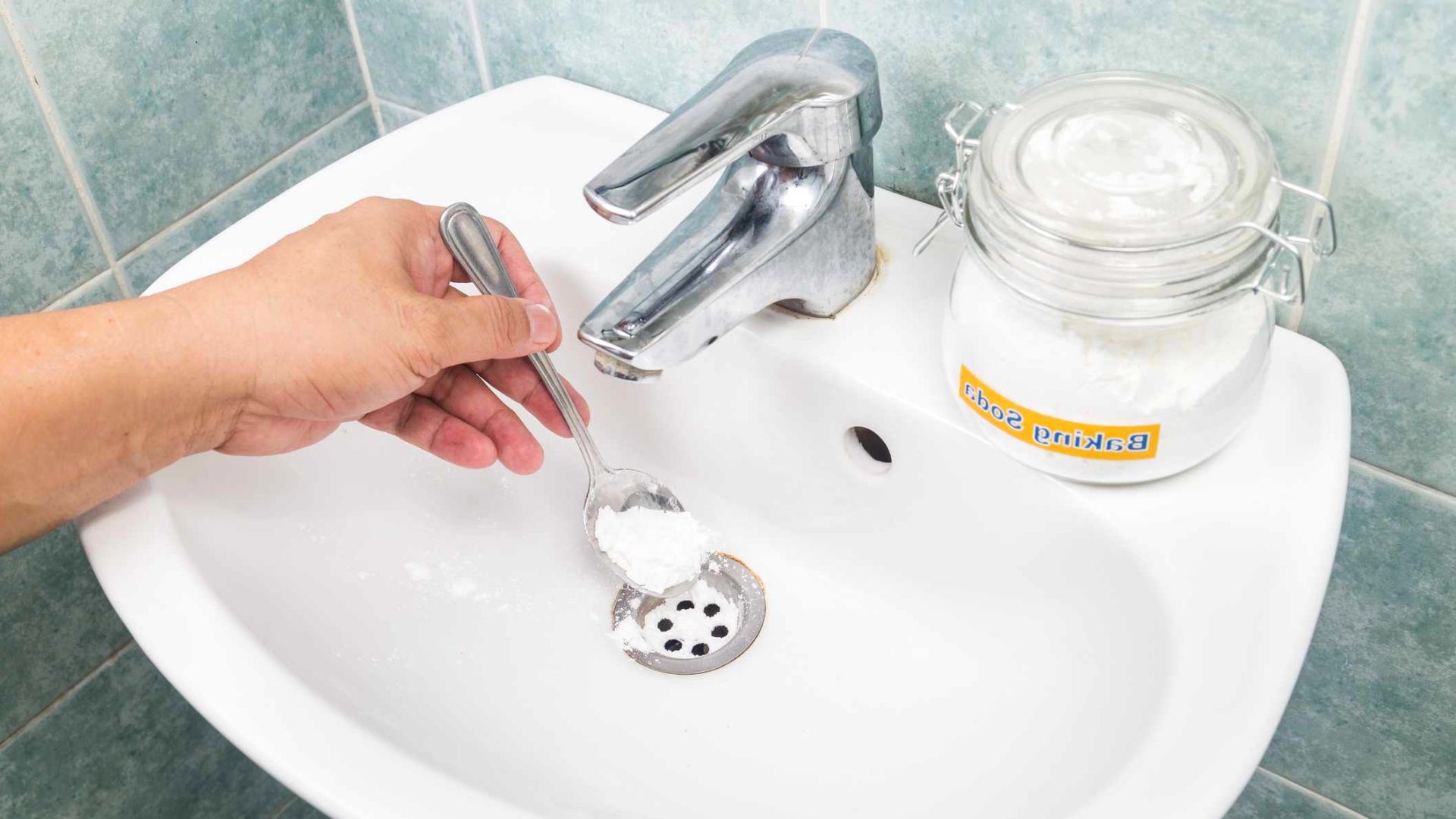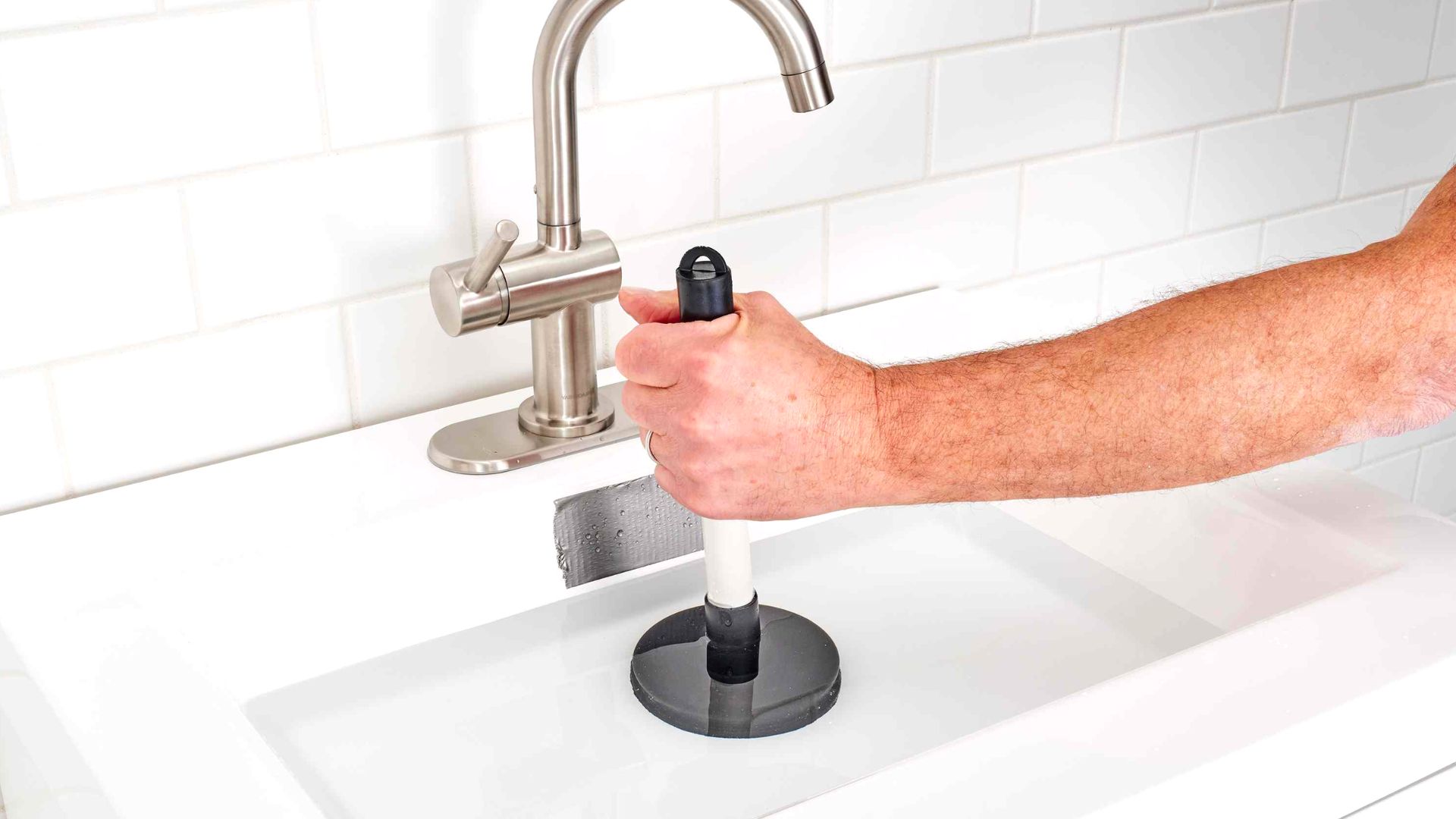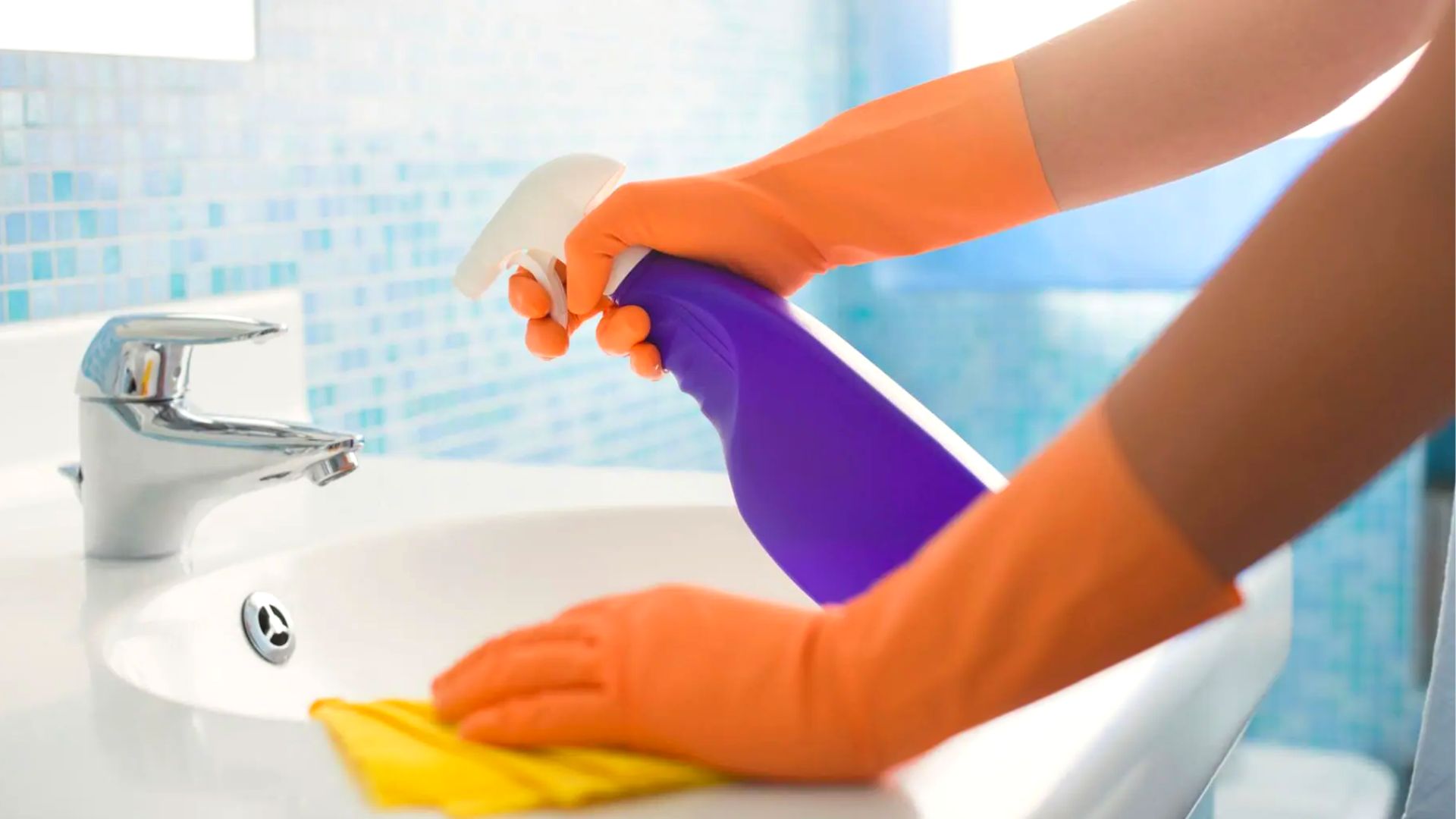7:00AM to 5:00PM
“A stagnant bathroom sink” is a nightmare described in four words.
We bet no one wants to enter the bathroom only to find dirty water in the sink or a slow-draining sink. And it may not always be possible to hire a plumber instantly for your drainage issues. Luckily, some effective DIY techniques can bail you out of trouble. And we’re going to tell you about all that! But before we begin, let’s first understand what hinders the draining process of your bathroom sink.

The number one reason your bathroom sink won’t drain is a clogged drain, which is generally caused when hair, skin flakes, nails, etc., combine with soap scum inside the drain hole. Aside from that, minerals from hard water can deposit inside the drain pipe, preventing the water from draining. You can try a bent wire coat hanger for the hair and pour half a cup of baking soda paired with apple cider vinegar or any vinegar, or if you have chemical drain cleaners aside from your homemade drain cleaner alternatives, you can try those, too.
And run hot water down the drain the way you unclog a kitchen sink. And speaking of the kitchen sink, you probably thought you’d only have to worry about a slow-draining sink in your clogged kitchen sink with the coffee grounds and other food, but here you are in the bathroom with a bathroom sink drain clogs to compete with your additional blocked sink.
Moreover, poor sink maintenance can lead to clogged pipes. If you don’t clean the sink and pipe regularly or don’t use enough water to “flush” soap, toothpaste and other foreign objects down the drain, they can stop the water from draining. And the standing water will become home to foul odours and disease-causing germs.
The water inside the drain pipe will have no place to go and exert pressure on the walls, resulting in minor or full-blown leaks. This can damage the pipe and any other surface in the vicinity. Plus, cleaning wastewater from the floors or walls can be a big nuisance.
One thing to note here is that while some clogs may slow down the draining process, others may stop it completely. Whatever the situation, addressing a clogged sink drain early is important to prevent severe damage.
Fortunately, you can do a few things to solve the problem of a clogged bathroom sink. Some are listed below.

Pouring hot water is one of the easiest methods to unclog a bathroom sink. All you have to do is heat (not boil) about 1 or 2 litres of water and pour it near the basin stopper, some at a time. This will melt the soap scum and undissolved food particles stuck inside the pipe.
Use a teapot or jug for this purpose, as this will help target the right area. But be careful not to spill anything on yourself. Depending on the severity of the clogged drains, you may need to repeat this a couple of times.
However, this technique can only be used for bathroom sinks draining slowly. Pouring more water into a stagnant sink is a disaster waiting to happen!
If you have a stagnant sink, try to remove the drain stopper and pull out any viable clog from the pipe using a bent coat hanger, nose pliers, or drain snake. This should allow some water to drain, after which you can pour the hot water.
Besides, not all drain pipes are built to handle hot water, so don’t employ this hack for PVC or ceramic pipes.
Another excellent method to fix a slow sink drain is to grab baking soda and vinegar from your kitchen cupboard if the hot water method doesn’t yield the desired results.
Pour about 1/2 cup of soda near the drain stopper and follow it with one cup of vinegar. Grab an old rag and cover the stopper so the bubbling solution doesn’t flow out of the sink.
The baking soda and vinegar create a chemical reaction, which helps break down stubborn clogs. In the case of a fully or partially stagnant sink, you will see the water level going down, indicating the reaction is working. If you’ve run out of vinegar, replace it with salt; only this time, mix ½ cup each.
Please wait 15 to 20 minutes to let the ingredients do their job, and pour hot water to flush the pipe. You can also conduct this procedure once or twice weekly as a preventative measure against clogs.
Now, this drain cleaning tool is more manual and a bit messy (read a lot), but trust us- there’s nothing like it to remove clogs that remain resistant to the above two methods.

Firstly, put on a pair of gloves. Then, remove some water to place the sink plunger properly on the plughole. Ensure enough to create a tight seal and keep the plughole in place. Then, block the overflow with some cloth.
Place a plunger with a flat head over the plughole to create a tight seal. Grab the handle and use swift to and fro motions to break any clog near the plughole. Repeat this step a few times, remove the plunger, and wait some time. You should see the water draining down the pipe. Finish off by pouring some hot water down the drain.
This more technical method may be necessary to remove highly stubborn clogs that just won’t budge. But before starting, get a bucket, old clothes or paper towels, a soft sponge, and a pair of wrenches.
Locate the slip nuts on either side of the P-trap (the U-shaped curved pipe below the sink) and remove them using the wrenches. Quickly place the bucket underneath to catch dirty water and wastewater flowing down (if any). Clean the P-trap with a cloth or sponge and rinse it with plain water.
As an additional step, you can clean the stub (the part attached to the wall and the P-trap) using a plumber’s snake. Insert it until you feel resistance and rotate the handle to bring out hair, paper or other foreign objects. You can also use a wire hanger if you do not have a drain auger.
Once done, reassemble everything and pour boiling water to check the flow and dissolve any remaining clogs from your plumbing system. We suggest avoiding harsh chemicals, as you may damage the pipes more.

Although our tips will help you clear the clog in bathroom sinks and even in your kitchen sink pipes, there are a few things you can do to prevent a clog in the first place. For one, refrain from throwing anything solid in the sink, like paper or food items, or you’ll indeed have a sink that is not draining correctly. When washing dishes, throw your food debris in the garbage disposal. Place a drain catcher or sink stopper to trap unwanted substances that may have accidentally ended up in the sink from causing drain blockages.
Use the hot water or baking soda and vinegar method regularly to break down even the slightest clog at the very start. If you still have a clog, it’s time to contact the plumbing experts. Your plumbing system could face a different problem, and it’s best to address it sooner than later to prevent further damage.
Lastly, preventative maintenance from professional plumbers can prevent a slow sink drain from happening in your bathroom, which will save money in the long run.
Not sure who to call for your stubborn blocked drains? You can rely on our fully licensed and highly recommended Gold Coast plumbers, from hot water system installation and maintenance to clearing blocked drains and gas fittings to deal with other plumbing issues. Call us today!